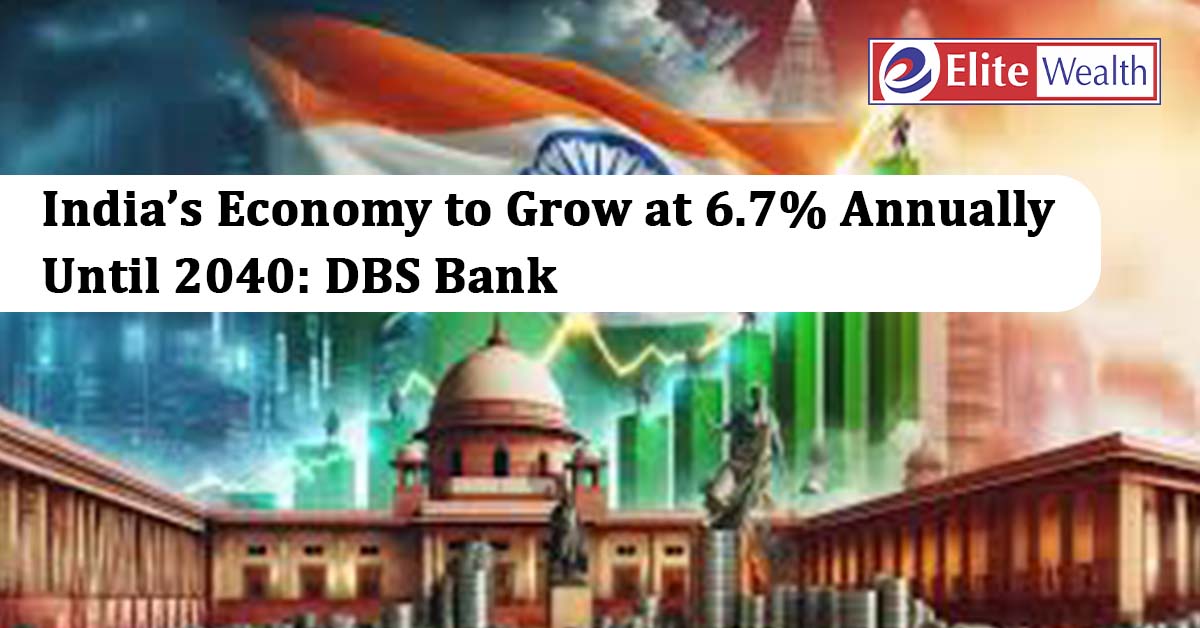
India’s economy is projected to expand at an average annual rate of 6.7% between 2025 and 2040, significantly outpacing China’s estimated 3% growth, according to a recent report by Singapore-based DBS Bank. The study highlights India’s demographic advantage, investment momentum, and structural reforms as key long-term growth drivers.
Growth Outlook and Scenarios
DBS expects India’s nominal GDP (in rupee terms) to grow by an average of 9.7% during this period. Under the base case, the economy could cross $5.6 trillion by 2030 and reach $11.5 trillion by 2040. In a bull case scenario, annual growth could average 7.3–7.5%, further strengthening India’s position as a global growth leader.
Rising Incomes and Economic Transition
India’s per capita income is projected to exceed $3,700 by 2030 and touch $7,000 by 2040, moving the country into the upper-middle-income bracket. This improvement will be driven by demographic strength, productivity gains, and expanding employment opportunities.
Growth Drivers and Sectoral Shifts
DBS attributes 1.8 percentage points of growth to favourable demographics and labour supply, supported by higher investments in education, health, and skills development. Capital formation, led by strong public and private sector investments and rising FDI inflows, is expected to contribute 2.6 percentage points to overall expansion.
The manufacturing sector’s share of GDP is projected to rise from around 17% to 25% by 2047, requiring annual growth of nearly 15%. This structural shift will be underpinned by policy reforms, infrastructure expansion, and global supply chain realignments.
India’s economy is projected to expand at an average annual rate of 6.7% between 2025 and 2040, significantly outpacing China’s estimated 3% growth, according to a recent report by Singapore-based DBS Bank. The study highlights India’s demographic advantage, investment momentum, and structural reforms as key long-term growth drivers.
Growth Outlook and Scenarios
DBS expects India’s nominal GDP (in rupee terms) to grow by an average of 9.7% during this period. Under the base case, the economy could cross $5.6 trillion by 2030 and reach $11.5 trillion by 2040. In a bull case scenario, annual growth could average 7.3–7.5%, further strengthening India’s position as a global growth leader.
Rising Incomes and Economic Transition
India’s per capita income is projected to exceed $3,700 by 2030 and touch $7,000 by 2040, moving the country into the upper-middle-income bracket. This improvement will be driven by demographic strength, productivity gains, and expanding employment opportunities.
Growth Drivers and Sectoral Shifts
DBS attributes 1.8 percentage points of growth to favourable demographics and labour supply, supported by higher investments in education, health, and skills development. Capital formation, led by strong public and private sector investments and rising FDI inflows, is expected to contribute 2.6 percentage points to overall expansion.
The manufacturing sector’s share of GDP is projected to rise from around 17% to 25% by 2047, requiring annual growth of nearly 15%. This structural shift will be underpinned by policy reforms, infrastructure expansion, and global supply chain realignments.
